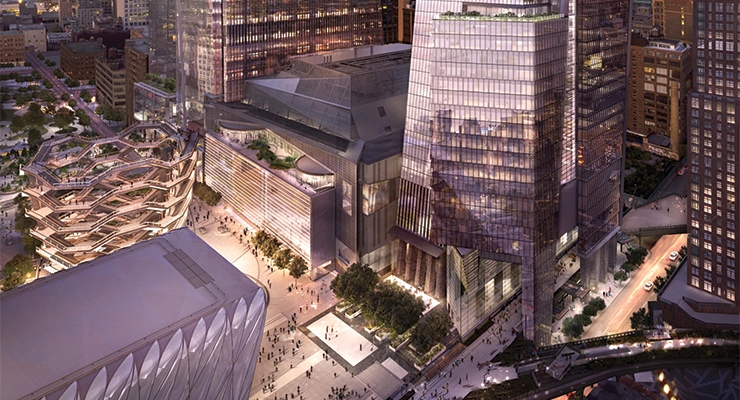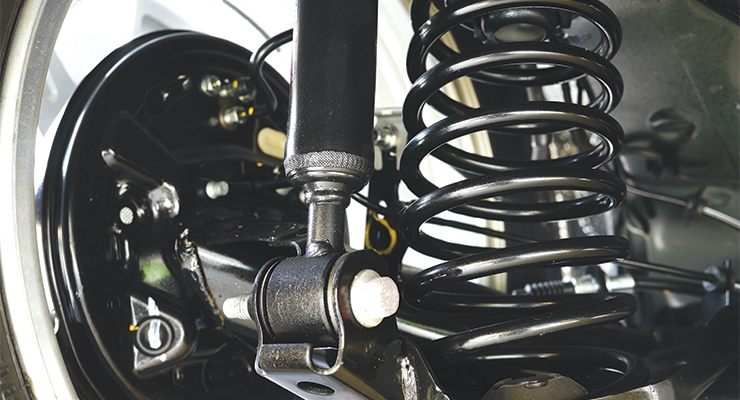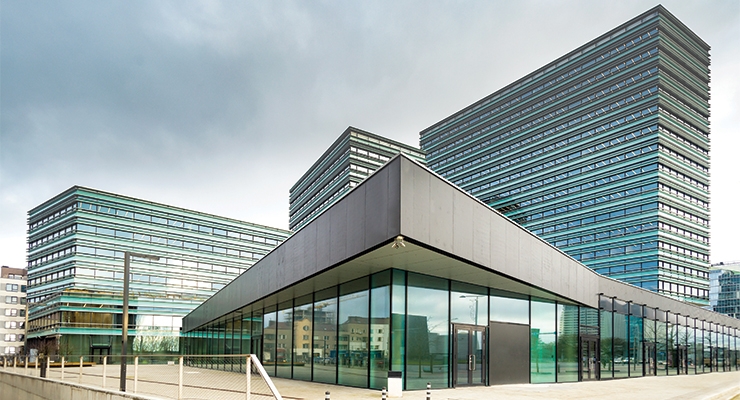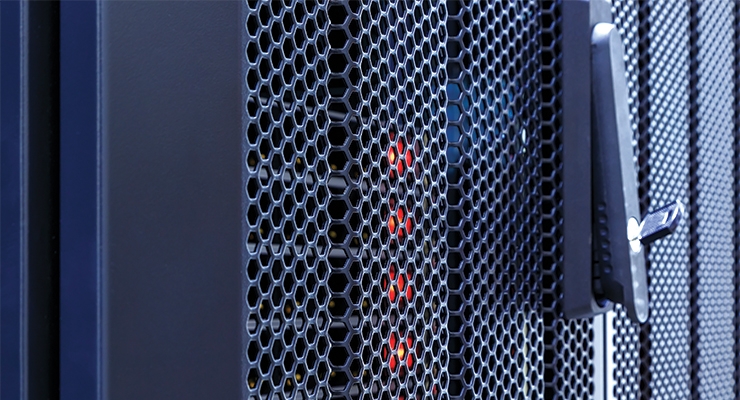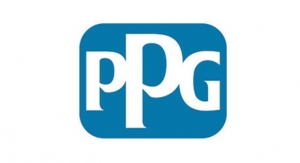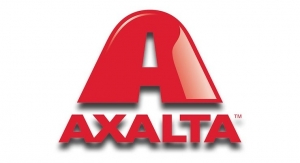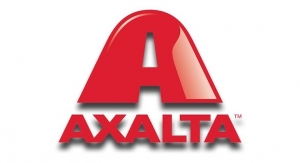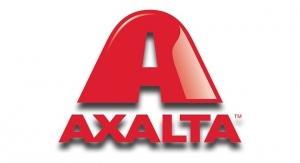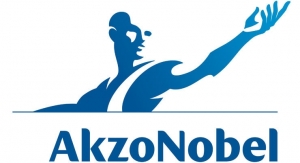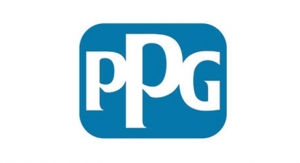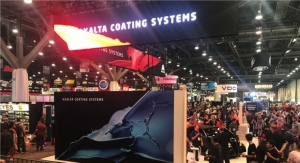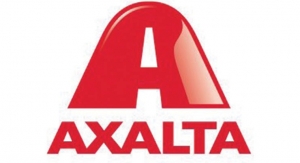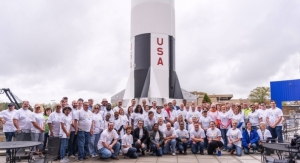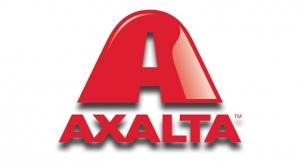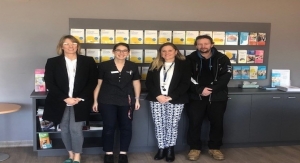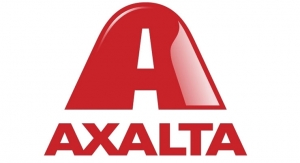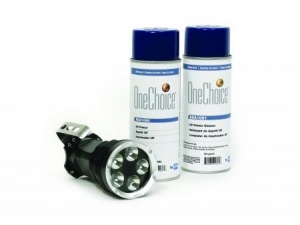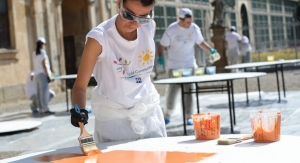Anthony Locicero, Associate Editor12.11.19
The global powder coatings market is forecasted to exceed $17 billion by 2025, according to a report by Global Market Insights, Inc.
The growth will be owed to environment-friendly properties, cost-effectiveness, high quality, swift paint applicability, and easy usability over conventional paints, according to Global Market Insights.
“General economic growth, as well as the ongoing adaptation of powder coatings as an alternative for liquid coatings in the market place, will keep pushing the healthy growth path,” said Daniela Vlad, AkzoNobel business unit director, powder coatings.
“The global powder market is still growing at a low single-digit. We see headwinds in different parts of the world,” Robert Roop, Axalta’s VP and chief technology officer, said. “Most end-use segments in North America did not do well in 2019 and the total market decreased by two to three percent.
“The European market has also been challenging in terms of growth and profitability. The main powder suppliers worked heavily on closing the price cost gap created after two years of continuous raw material increases,” Roop continued. “In 2020, despite signs of market slow down, restoring and maintaining margins will remain an area of focus for the industry.”
Roop noted that the powder market keeps evolving. “More environmentally friendly solutions, improvements in quality and efficiency, better services, and new technology advances are continuously being added on the market This provides the customers with significant added value in both existing and new fields of applications,” he said.
Added Tabitha McLeich, global product director powder coatings for Sherwin-Williams: “2019 showed continued growth in powder coatings around the globe as manufacturers and applicators continue to realize the operational efficiencies, lower environmental impact, and color and texture options that powder coatings provide for their finished goods.”
Powder over liquid
Powder coatings are available in an almost limitless range of colors and textures, and technological advancements have resulted in excellent performance properties, according to the Powder Coatings Institute.
“Customers increasingly aim to reduce environmental impact and demand sustainable coatings solutions,” Vlad said of the advantages of using powder over liquid. “Powder coatings contain no volatile organic compounds (VOC) and no toxic heavy metals such as lead or chromium (VI), which makes them a very viable solution in this age of environmental awareness.
“Powder coatings have a high utilization of material – up to 99 percent – and any overspray can be recycled, minimizing waste,” she continued. “Wider color options and textures reinforce powder as a strong substitute for liquid coatings. Powder coatings are sustainable, clean, safe, have excellent performance characteristics and offer significant cost benefits compared to alternative coatings.”
Roop cited “excellent coverage on three-dimensional objects; limited waste (high recycle capability); a wide range of colors and appearance (gloss, matte, even wrinkle); excellent durability (scratch, chip, wear); and no VOCs.”
“Powder coatings offer advantages over liquid coatings at every point on the lifecycle,” added Shelley Verdun, PPG business manager, powder coatings – Americas. “Powder coatings have enhanced durability, exceptional chip and abrasion resistance, are low in VOC and cost-efficient due to high transfer efficiency and reclaimability.
“From an applicator perspective, powder coatings offer low cost-of-entry to the market, low PPE requirements, do not use solvent for clean-up and have minimal impact on the environment. In addition, there are no special storage or transportation requirements and in powder coating processes, no hazardous waste is generated.”
Powder coatings provide a more durable finish than liquid paints can offer, while still providing an attractive finish, according to the Powder Coatings Institute.
“Powder coatings offer numerous advantages for applicators: Improved part coverage, transfer efficiency, and the ability to reclaim powder on a manufacturing line are all key advantages,” McLeich said. “Powder offers a wide variety of color and technology options that allow applicators and manufacturers to dial in their coating to the needs of their customers or end-users. Whether it is an exterior building product that needs to hold up to the elements and UV light or a part for office furniture that needs to hold up daily wear and tear of the user, powder coatings offer the right protection for a specific environment.”
Markets
Key markets, the Powder Coatings Institute reports, include agriculture and construction; appliances; architectural; automotive and transportation; electrical; functional; general metal; HVAC; and lawn and garden.
Powder coatings represent more than 15 percent of the total industrial finishing market, per the Powder Coatings Institute.
“The architectural, appliance, automotive and furniture markets are all showing steady growth,” Verdun said. “While powder has traditionally been used in these areas, confidence in powder coatings is growing. Powder has demonstrated exceptional durability and corrosion performance [and] advances in the technology have demonstrated that powder coatings are capable of higher appearance standards, lower and faster cure rates, thinner films and extended metallic color space.”
“For powder coatings, there is an over-arching growth theme of replacing alternative finishes in the areas where it will provide comparable or better appearance, protection and functionality,” Vlad said. “Regionally, we are looking at emerging growth areas, such as China and South Asia. In China, we see a large wave of powder applications in various industrial applications, such as commercial vehicles and construction equipment. Specific sectors also bring new innovations, such as the automotive sector, where sustainability is a key factor in the decision process.”
Added Roop: “A wide range of markets will experience growth in powder coatings, including automotive parts, appliances, furniture, architectural, and ACE.”
Regions
Global Market Insights reported that the Latin America powder coatings market will be led by Brazil and Mexico.
Production is projected to exceed 250 kilotons by 2025,per the report.
Mexico is expected to witness strong growth in the furniture industry as numerous companies have shifted certain segments of their production operations in the country, Global Market Insights said.
“Asia Pacific has been the fastest-growing coatings market for powder with an estimated growth rate of roughly five percent, followed by Europe,” Verdun said. “The key drivers of growth include GDP, residential and architectural construction, industrial and automotive production.”
“China still is the No. 1 market, followed by North America,” Vlad added.
The Indian powder coatings market accounted for a revenue of $896.7 million in 2017 and is anticipated to generate revenue of $1.5 billion by 2025, according to Allied Market Research.
In the news
In October, Axalta acquired a manufacturing site in Çerkezköy, Turkey, for its powder coating business.
The facility, which is currently being upgraded, will host the production of all Axalta’s premium powder product ranges, including Matt (AE30 & SD30), Fine Textured (AE03 & SD03) and Semi-Gloss (AE70 & SD70) Collections, all specifically designed for architectural applications.
“By purchasing an established powder manufacturing site, we will be able to service that market very quickly. Our customers in Turkey and the surrounding regions will enjoy even quicker responses to their increasing demand for high-quality products,” said Klaus Gast, business director for Axalta’s powder coatings business, EMEA.
The company also expanded its Landshut, Germany, site, creating a second production facility in the region for bonded metallic powder coatings alongside Axalta’s Montbrison plant in France.
The second production facility will enable Axalta to better respond to the increasing demand for high-quality metallic powder coatings, which are used specifically in architectural and design applications. Axalta’s powder coatings product portfolio includes the ICONICA, Optimum Fine Textured, Anodic and Timeless collections as well as more than 150 currently available, off-the-shelf metallic powder coatings.
In July, AkzoNobel announced plans to add three new production lines at its Changzhou powder coatings plant in China – the company’s largest facility of its kind in the world.
The €3 million investment will support additional supplies of acrylic powder coatings, metallic powder coatings and powder primers for the automotive sector, strengthening AkzoNobel’s ability to deliver more locally produced premium products.
“China is a high priority region for us and the booming powder coatings industry in China will help to optimize our production and investment strategy,” CEO Thierry Vanlancker said.
“Given emerging market trends and customer needs, we are fully aware of the importance of manufacturing and delivering locally,” added Mark Kwok, president of AkzoNobel China/North Asia. “The Changzhou site plays a strategic role in supporting our business development in China. The new production lines will further our localization strategy to create more value for both ourselves and our customers with efficient and customized solutions.”
Sun Chemical Performance Pigments launched Benda Lutz COMPAL PC, a highly concentrated aluminum preparation for powder coatings that comes in a pelletized form and virtually eliminates dusting to minimize housekeeping, simplifies equipment clean-up and improves worker exposure.
COMPAL PC takes an innovative approach to shipping, storing, handling and incorporating aluminum pigments into powder coatings. Unlike most aluminum pigments, it is easy to handle and store and can be added at almost any point after the extruder in the powder paint manufacturing process.
Designed for TGIC and TGIC-free polyester chemistries,
the broadly compatible pellets can be dry blended or bonded to deliver excellent appearance and performance. Since the aluminum flakes are fully wet-out, improvements in reflectivity and gloss can be achieved.
The pellet form is not classified for shipping and storage in the European Union and is shipped in compact bag-in-box packaging that is eco-friendly and recyclable.
“Our new Benda-Lutz COMPAL PC aluminum preparation is a major innovation for the aluminum powder coatings market,” said Michael Venturini, marketing director, Coatings, Sun Chemical. “In the 1980s, we pioneered the bonding process that revolutionized the way metallics and effect pigments work together with powder coatings and now we’re excited to launch a product that we believe will propel aluminum powder coatings forward into the next generation of innovation.”
Powder coatings from PPG and AkzoNobel were used in two major projects in New York – Pier 17 and Hudson Yards, respectively.
PPG DURANAR powder coating was used on the newly redesigned Pier 17 at South Street Seaport in New York City, making it the first application of the coating in a challenging marine environment.
New York-based ShoP Architects specified PPG DURANAR powder coating for Pier 17’s curtain wall for two primary reasons.
First, the product is manufactured with a solvent-free, low-VOC (volatile organic compound) formulation that will enable the project to earn credit toward Leadership in Energy and Environmental Design (LEED) certification by the U.S. Green Building Council.
Second, PPG was able to offer a long-term warranty for film integrity, chalk and color fade for all coated metal extrusions on the building’s curtain wall. Pier 17 is located on the East River, roughly five miles from the Atlantic Ocean.
“The only way to fulfill the architect’s demand for a powder coating and long-term warranty in a moist, salt-laden marine environment was to apply it over our proven PPG DURANAR primer,” said Scott Moffatt, PPG market manager, building products.
“While one-coat powder systems typically perform well in normal environments, they are susceptible to failure in environments like South Street Seaport. It was very gratifying to offer a solution that met the architect’s challenging requirements.”
PPG also supplied PPG DURANAR Sunstorm coatings for 500 interior metal panels that are visible through a series of stacked 20-foot-tall lightboxes that comprise much of the building’s façade. First coated with a pearlescent silver-gray PPG DURANAR Sunstorm coating, the panels then were covered with a stencil and painted again with a bone-white PPG DURANAR coating. The stencil created an appealing dot-matrix pattern that diffuses sunlight when it strikes the panels during the day and disperses a spray of multiple colors that are projected onto the building’s exterior surface at night.
Hudson Yards is the largest private real estate development in U.S. history, and the ongoing project saw the completion of the two towers at 10 and 30 Hudson Yards.
Taller than the Empire State Building, the glass and steel structure of 30 Hudson Yards uses AkzoNobel’s high-performance architectural powder coatings.
A futuristic “pyramid” in Moscow that uses low solar absorption powder coatings supplied by AkzoNobel won an Architzer A+ Award from the global architectural community.
The structure is coated in Black Onyx from Interpon’s D2525 Eco portfolio, a range of heat-reflective coatings that can bounce the sun’s rays back off the exterior of a building.
“The special thing about Interpon D2525 Eco is its ability to keep buildings cooler, which can make an important contribution to reducing the urban heat island effect,” Vlad said.
Product launches
PPG recently launched the Envirocron Extreme Protection EDGE powder coating technology.
“This innovative advanced powder coating technology delivers exceptional edge corrosion protection in one coat,” Verdun said.
“Specially formulated to cover sharp edges created during metal fabrication, Envirocron Extreme Protection EDGE delivers film build coverage of greater than 20 microns on edges, far surpassing standard one-coat and two-coat powder systems, and providing exceptional edge corrosion performance.
“A one-coat edge solution offers the applicator significant cost savings in material, labor, utilities and time. There is no need for primer or the added capital cost to mechanically improve edges via edge-rounding or blasting equipment,” she continued. “Longer term, Envirocron Extreme Protection EDGE coatings reduce warranty claim exposure and improve resale value for the end-user through a longer product lifecycle.”
AkzoNobel launched Interpon D X-Pro, a scratch-resistant powder.
“It is available in both matte and satin finishes and demonstrates greater scratch resistance during handling, assembly and transportation of coated assets,” Vlad said.
“Curing at lower temperatures is made possible with Interpon Low-E products. Available in a range of smooth and coarse textures, Interpon Low-E can be cured at a temperature between 150-170˚C, which saves energy, improves productivity and therefore is environmentally and cost-friendly,” Vlad continued.
“New Interpon D2525 Structura Flex is the first and only powder coating to combine Qualicoat Class 2 weatherability of super durable coatings with Qualicoat Class 1 mechanical performance advantages of standard durable systems,” Vlad added. “This range allows for the same mechanical tooling as standard powder coatings, putting an end to the appearance of cracks, and offers higher gloss retention and resistance to color change.
“We also introduced a new range of simple-to-specify corrosion protection primers. Interpon Redox powders offer customers a one-stop-shop with four innovative systems to choose from, suitable for even the harshest environments,” she concluded.
“We have recently launched a new color-card for our North American powder coatings that includes a full range of color and technology available to applicators through our North American facilities,” McLeich said. “This color card features a wide range of colors, textures, and chemistries for applicators to share and ideate with their customers in new spaces. Also, the addition of Powdura 4000 Anodite powder coatings broadened our product offering for the architectural building products market. This 12-color collection is designed to look like anodized metal surfaces and delivers a smooth, ultra-matte finish in a super durable TGIC-free technology for long-term weathering resistance.”
Going forward
As we move into the next decade, powder coatings manufacturers continue to work on new technologies.
According to Roop, Axalta is crafting next-generation hyper durable products to extend the mechanical and weathering durability to the next level; new bonded metallic products with unique appearances; and new thermoplastic products to extend the range of application for thermoplastic powder coatings.
“At PPG,” Verdun said, “we are committed to innovating in powder and focused on developing benchmark technologies that will solve our customers’ most pressing problems while being ahead of regulatory needs.”
“Everything we do is driven by market needs and providing more sustainable solutions for our customers around the world,” added Vlad. “Whether that’s offering scratch resistance, combining superdurability and flexibility, improved material usage through lower applied film builds or adding more functionality to the coatings, providing the ultimate powder solutions and helping our customers to reach their sustainability goals are at the core of our work. Our ambition is to make powder coatings available to as many markets as possible.”
The growth will be owed to environment-friendly properties, cost-effectiveness, high quality, swift paint applicability, and easy usability over conventional paints, according to Global Market Insights.
“General economic growth, as well as the ongoing adaptation of powder coatings as an alternative for liquid coatings in the market place, will keep pushing the healthy growth path,” said Daniela Vlad, AkzoNobel business unit director, powder coatings.
“The global powder market is still growing at a low single-digit. We see headwinds in different parts of the world,” Robert Roop, Axalta’s VP and chief technology officer, said. “Most end-use segments in North America did not do well in 2019 and the total market decreased by two to three percent.
“The European market has also been challenging in terms of growth and profitability. The main powder suppliers worked heavily on closing the price cost gap created after two years of continuous raw material increases,” Roop continued. “In 2020, despite signs of market slow down, restoring and maintaining margins will remain an area of focus for the industry.”
Roop noted that the powder market keeps evolving. “More environmentally friendly solutions, improvements in quality and efficiency, better services, and new technology advances are continuously being added on the market This provides the customers with significant added value in both existing and new fields of applications,” he said.
Added Tabitha McLeich, global product director powder coatings for Sherwin-Williams: “2019 showed continued growth in powder coatings around the globe as manufacturers and applicators continue to realize the operational efficiencies, lower environmental impact, and color and texture options that powder coatings provide for their finished goods.”
Powder over liquid
Powder coatings are available in an almost limitless range of colors and textures, and technological advancements have resulted in excellent performance properties, according to the Powder Coatings Institute.
“Customers increasingly aim to reduce environmental impact and demand sustainable coatings solutions,” Vlad said of the advantages of using powder over liquid. “Powder coatings contain no volatile organic compounds (VOC) and no toxic heavy metals such as lead or chromium (VI), which makes them a very viable solution in this age of environmental awareness.
“Powder coatings have a high utilization of material – up to 99 percent – and any overspray can be recycled, minimizing waste,” she continued. “Wider color options and textures reinforce powder as a strong substitute for liquid coatings. Powder coatings are sustainable, clean, safe, have excellent performance characteristics and offer significant cost benefits compared to alternative coatings.”
Roop cited “excellent coverage on three-dimensional objects; limited waste (high recycle capability); a wide range of colors and appearance (gloss, matte, even wrinkle); excellent durability (scratch, chip, wear); and no VOCs.”
“Powder coatings offer advantages over liquid coatings at every point on the lifecycle,” added Shelley Verdun, PPG business manager, powder coatings – Americas. “Powder coatings have enhanced durability, exceptional chip and abrasion resistance, are low in VOC and cost-efficient due to high transfer efficiency and reclaimability.
“From an applicator perspective, powder coatings offer low cost-of-entry to the market, low PPE requirements, do not use solvent for clean-up and have minimal impact on the environment. In addition, there are no special storage or transportation requirements and in powder coating processes, no hazardous waste is generated.”
Powder coatings provide a more durable finish than liquid paints can offer, while still providing an attractive finish, according to the Powder Coatings Institute.
“Powder coatings offer numerous advantages for applicators: Improved part coverage, transfer efficiency, and the ability to reclaim powder on a manufacturing line are all key advantages,” McLeich said. “Powder offers a wide variety of color and technology options that allow applicators and manufacturers to dial in their coating to the needs of their customers or end-users. Whether it is an exterior building product that needs to hold up to the elements and UV light or a part for office furniture that needs to hold up daily wear and tear of the user, powder coatings offer the right protection for a specific environment.”
Markets
Key markets, the Powder Coatings Institute reports, include agriculture and construction; appliances; architectural; automotive and transportation; electrical; functional; general metal; HVAC; and lawn and garden.
Powder coatings represent more than 15 percent of the total industrial finishing market, per the Powder Coatings Institute.
“The architectural, appliance, automotive and furniture markets are all showing steady growth,” Verdun said. “While powder has traditionally been used in these areas, confidence in powder coatings is growing. Powder has demonstrated exceptional durability and corrosion performance [and] advances in the technology have demonstrated that powder coatings are capable of higher appearance standards, lower and faster cure rates, thinner films and extended metallic color space.”
“For powder coatings, there is an over-arching growth theme of replacing alternative finishes in the areas where it will provide comparable or better appearance, protection and functionality,” Vlad said. “Regionally, we are looking at emerging growth areas, such as China and South Asia. In China, we see a large wave of powder applications in various industrial applications, such as commercial vehicles and construction equipment. Specific sectors also bring new innovations, such as the automotive sector, where sustainability is a key factor in the decision process.”
Added Roop: “A wide range of markets will experience growth in powder coatings, including automotive parts, appliances, furniture, architectural, and ACE.”
Regions
Global Market Insights reported that the Latin America powder coatings market will be led by Brazil and Mexico.
Production is projected to exceed 250 kilotons by 2025,per the report.
Mexico is expected to witness strong growth in the furniture industry as numerous companies have shifted certain segments of their production operations in the country, Global Market Insights said.
“Asia Pacific has been the fastest-growing coatings market for powder with an estimated growth rate of roughly five percent, followed by Europe,” Verdun said. “The key drivers of growth include GDP, residential and architectural construction, industrial and automotive production.”
“China still is the No. 1 market, followed by North America,” Vlad added.
The Indian powder coatings market accounted for a revenue of $896.7 million in 2017 and is anticipated to generate revenue of $1.5 billion by 2025, according to Allied Market Research.
In the news
In October, Axalta acquired a manufacturing site in Çerkezköy, Turkey, for its powder coating business.
The facility, which is currently being upgraded, will host the production of all Axalta’s premium powder product ranges, including Matt (AE30 & SD30), Fine Textured (AE03 & SD03) and Semi-Gloss (AE70 & SD70) Collections, all specifically designed for architectural applications.
“By purchasing an established powder manufacturing site, we will be able to service that market very quickly. Our customers in Turkey and the surrounding regions will enjoy even quicker responses to their increasing demand for high-quality products,” said Klaus Gast, business director for Axalta’s powder coatings business, EMEA.
The company also expanded its Landshut, Germany, site, creating a second production facility in the region for bonded metallic powder coatings alongside Axalta’s Montbrison plant in France.
The second production facility will enable Axalta to better respond to the increasing demand for high-quality metallic powder coatings, which are used specifically in architectural and design applications. Axalta’s powder coatings product portfolio includes the ICONICA, Optimum Fine Textured, Anodic and Timeless collections as well as more than 150 currently available, off-the-shelf metallic powder coatings.
In July, AkzoNobel announced plans to add three new production lines at its Changzhou powder coatings plant in China – the company’s largest facility of its kind in the world.
The €3 million investment will support additional supplies of acrylic powder coatings, metallic powder coatings and powder primers for the automotive sector, strengthening AkzoNobel’s ability to deliver more locally produced premium products.
“China is a high priority region for us and the booming powder coatings industry in China will help to optimize our production and investment strategy,” CEO Thierry Vanlancker said.
“Given emerging market trends and customer needs, we are fully aware of the importance of manufacturing and delivering locally,” added Mark Kwok, president of AkzoNobel China/North Asia. “The Changzhou site plays a strategic role in supporting our business development in China. The new production lines will further our localization strategy to create more value for both ourselves and our customers with efficient and customized solutions.”
Sun Chemical Performance Pigments launched Benda Lutz COMPAL PC, a highly concentrated aluminum preparation for powder coatings that comes in a pelletized form and virtually eliminates dusting to minimize housekeeping, simplifies equipment clean-up and improves worker exposure.
COMPAL PC takes an innovative approach to shipping, storing, handling and incorporating aluminum pigments into powder coatings. Unlike most aluminum pigments, it is easy to handle and store and can be added at almost any point after the extruder in the powder paint manufacturing process.
Designed for TGIC and TGIC-free polyester chemistries,
the broadly compatible pellets can be dry blended or bonded to deliver excellent appearance and performance. Since the aluminum flakes are fully wet-out, improvements in reflectivity and gloss can be achieved.
The pellet form is not classified for shipping and storage in the European Union and is shipped in compact bag-in-box packaging that is eco-friendly and recyclable.
“Our new Benda-Lutz COMPAL PC aluminum preparation is a major innovation for the aluminum powder coatings market,” said Michael Venturini, marketing director, Coatings, Sun Chemical. “In the 1980s, we pioneered the bonding process that revolutionized the way metallics and effect pigments work together with powder coatings and now we’re excited to launch a product that we believe will propel aluminum powder coatings forward into the next generation of innovation.”
Powder coatings from PPG and AkzoNobel were used in two major projects in New York – Pier 17 and Hudson Yards, respectively.
PPG DURANAR powder coating was used on the newly redesigned Pier 17 at South Street Seaport in New York City, making it the first application of the coating in a challenging marine environment.
New York-based ShoP Architects specified PPG DURANAR powder coating for Pier 17’s curtain wall for two primary reasons.
First, the product is manufactured with a solvent-free, low-VOC (volatile organic compound) formulation that will enable the project to earn credit toward Leadership in Energy and Environmental Design (LEED) certification by the U.S. Green Building Council.
Second, PPG was able to offer a long-term warranty for film integrity, chalk and color fade for all coated metal extrusions on the building’s curtain wall. Pier 17 is located on the East River, roughly five miles from the Atlantic Ocean.
“The only way to fulfill the architect’s demand for a powder coating and long-term warranty in a moist, salt-laden marine environment was to apply it over our proven PPG DURANAR primer,” said Scott Moffatt, PPG market manager, building products.
“While one-coat powder systems typically perform well in normal environments, they are susceptible to failure in environments like South Street Seaport. It was very gratifying to offer a solution that met the architect’s challenging requirements.”
PPG also supplied PPG DURANAR Sunstorm coatings for 500 interior metal panels that are visible through a series of stacked 20-foot-tall lightboxes that comprise much of the building’s façade. First coated with a pearlescent silver-gray PPG DURANAR Sunstorm coating, the panels then were covered with a stencil and painted again with a bone-white PPG DURANAR coating. The stencil created an appealing dot-matrix pattern that diffuses sunlight when it strikes the panels during the day and disperses a spray of multiple colors that are projected onto the building’s exterior surface at night.
Hudson Yards is the largest private real estate development in U.S. history, and the ongoing project saw the completion of the two towers at 10 and 30 Hudson Yards.
Taller than the Empire State Building, the glass and steel structure of 30 Hudson Yards uses AkzoNobel’s high-performance architectural powder coatings.
A futuristic “pyramid” in Moscow that uses low solar absorption powder coatings supplied by AkzoNobel won an Architzer A+ Award from the global architectural community.
The structure is coated in Black Onyx from Interpon’s D2525 Eco portfolio, a range of heat-reflective coatings that can bounce the sun’s rays back off the exterior of a building.
“The special thing about Interpon D2525 Eco is its ability to keep buildings cooler, which can make an important contribution to reducing the urban heat island effect,” Vlad said.
Product launches
PPG recently launched the Envirocron Extreme Protection EDGE powder coating technology.
“This innovative advanced powder coating technology delivers exceptional edge corrosion protection in one coat,” Verdun said.
“Specially formulated to cover sharp edges created during metal fabrication, Envirocron Extreme Protection EDGE delivers film build coverage of greater than 20 microns on edges, far surpassing standard one-coat and two-coat powder systems, and providing exceptional edge corrosion performance.
“A one-coat edge solution offers the applicator significant cost savings in material, labor, utilities and time. There is no need for primer or the added capital cost to mechanically improve edges via edge-rounding or blasting equipment,” she continued. “Longer term, Envirocron Extreme Protection EDGE coatings reduce warranty claim exposure and improve resale value for the end-user through a longer product lifecycle.”
AkzoNobel launched Interpon D X-Pro, a scratch-resistant powder.
“It is available in both matte and satin finishes and demonstrates greater scratch resistance during handling, assembly and transportation of coated assets,” Vlad said.
“Curing at lower temperatures is made possible with Interpon Low-E products. Available in a range of smooth and coarse textures, Interpon Low-E can be cured at a temperature between 150-170˚C, which saves energy, improves productivity and therefore is environmentally and cost-friendly,” Vlad continued.
“New Interpon D2525 Structura Flex is the first and only powder coating to combine Qualicoat Class 2 weatherability of super durable coatings with Qualicoat Class 1 mechanical performance advantages of standard durable systems,” Vlad added. “This range allows for the same mechanical tooling as standard powder coatings, putting an end to the appearance of cracks, and offers higher gloss retention and resistance to color change.
“We also introduced a new range of simple-to-specify corrosion protection primers. Interpon Redox powders offer customers a one-stop-shop with four innovative systems to choose from, suitable for even the harshest environments,” she concluded.
“We have recently launched a new color-card for our North American powder coatings that includes a full range of color and technology available to applicators through our North American facilities,” McLeich said. “This color card features a wide range of colors, textures, and chemistries for applicators to share and ideate with their customers in new spaces. Also, the addition of Powdura 4000 Anodite powder coatings broadened our product offering for the architectural building products market. This 12-color collection is designed to look like anodized metal surfaces and delivers a smooth, ultra-matte finish in a super durable TGIC-free technology for long-term weathering resistance.”
Going forward
As we move into the next decade, powder coatings manufacturers continue to work on new technologies.
According to Roop, Axalta is crafting next-generation hyper durable products to extend the mechanical and weathering durability to the next level; new bonded metallic products with unique appearances; and new thermoplastic products to extend the range of application for thermoplastic powder coatings.
“At PPG,” Verdun said, “we are committed to innovating in powder and focused on developing benchmark technologies that will solve our customers’ most pressing problems while being ahead of regulatory needs.”
“Everything we do is driven by market needs and providing more sustainable solutions for our customers around the world,” added Vlad. “Whether that’s offering scratch resistance, combining superdurability and flexibility, improved material usage through lower applied film builds or adding more functionality to the coatings, providing the ultimate powder solutions and helping our customers to reach their sustainability goals are at the core of our work. Our ambition is to make powder coatings available to as many markets as possible.”

